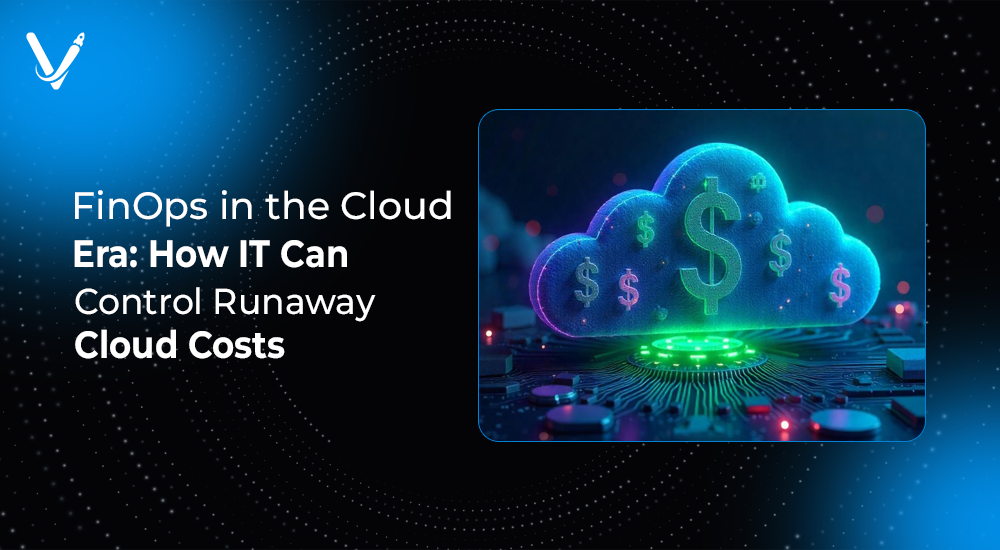FinOps in the Cloud Era: How IT Can Control Runaway Cloud Costs


- Jul 15, 2025



Cloud computing has revolutionized the way organizations operate. With its flexibility, scalability, and on-demand pricing, it's no wonder companies have embraced the cloud with open arms. Yet, there's a growing storm under the surface: runaway cloud costs. As organizations scale up their infrastructure, many find themselves facing bloated cloud bills that are difficult to explain, forecast, or control.
This is where FinOps enters the conversation. A fusion of finance and DevOps, FinOps enables IT, finance, and business teams to collaborate on cloud cost management and drive financial accountability across the organization. But what is FinOps exactly? How can companies implement it effectively? And which FinOps tools and cloud cost management solutions actually deliver?
This comprehensive guide explores how FinOps is reshaping low cost cloud management, empowering IT leaders to transform financial chaos into clarity and control.
At its core, FinOps is a cultural and operational framework that unites engineering, finance, and business teams around a shared goal: maximizing the value of every dollar spent in the cloud. Unlike traditional IT cost control, which operates retrospectively, FinOps is proactive, iterative, and deeply integrated into the software development lifecycle.
Rather than leaving cloud billing to finance or engineering alone, FinOps ensures that cost awareness and accountability are embedded into the daily workflows of everyone who influences cloud spend. This means:
FinOps meaning isn't just about saving money—it's about making smarter decisions that align cloud performance with business value.
Before exploring FinOps tools and strategies, it's important to understand the problem. Several factors contribute to excessive cloud spend:
This complexity is further exacerbated by the multi-cloud trend. Companies may use AWS, Azure, and Google Cloud simultaneously, each with its own billing model.
To regain control over cloud costs, FinOps follows a structured lifecycle with three key phases:
Gain detailed visibility into spend across services, teams, and projects. This includes:
Use insights to reduce waste and improve efficiency. Actions might include:
Establish governance, track KPIs, and foster accountability. Best practices include:
This cyclical approach enables continuous improvement in cloud cost management and optimization.
A growing ecosystem of cloud cost tools has emerged to support FinOps practices. These tools offer real-time analytics, automation, forecasting, and policy enforcement. Here are some of the most trusted FinOps solutions available today:
These cloud cost management solutions provide a foundation for building scalable FinOps practices.
A mid-sized SaaS company noticed its cloud bills tripling over 12 months, with no corresponding revenue increase. After implementing a FinOps program, it:
Result: A 35% reduction in monthly cloud spend and better alignment between engineering and finance.
To fully embrace FinOps and achieve cost optimization cloud outcomes, IT leaders should adopt the following strategies:
Include representatives from engineering, finance, and product. Ensure regular communication and shared goals.
Use cloud cost management tools that provide live updates. Encourage teams to monitor their own usage.
Developers need to understand the pricing models of cloud services they use. Short workshops or documentation help foster this mindset.
Set up scripts to shut down unused instances or auto-scale services. Use tagging to enforce policies.
Define budgets, track KPIs like cost per customer, and hold stakeholders accountable in regular FinOps reviews.
These practices form the bedrock of low cost cloud management.
Implementing FinOps isn’t without hurdles. Here’s how to overcome the most common issues:
Solution: Position FinOps as an enabler, not a constraint. Celebrate cost-saving wins as team achievements.
Solution: Choose interoperable FinOps tools that integrate with existing systems. Avoid over-complication.
Solution: Centralize data in dashboards accessible to all stakeholders.
Solution: Use financial planning and analysis software to model scenarios. Combine with historical trends.
Each obstacle presents an opportunity to strengthen your FinOps foundation.
A critical part of FinOps is balancing cost and cloud performance. Reducing spend should never degrade the user experience or compromise SLAs.
For example, replacing an over-provisioned server with a smaller, better-utilized one can lower costs without sacrificing performance.
AI-driven cloud optimization tools are on the rise. These platforms use machine learning to forecast demand, recommend purchases, and auto-scale environments.
As the field evolves, expect FinOps to be increasingly embedded into CI/CD pipelines and DevSecOps workflows.
Tracking the right KPIs is vital for success in FinOps cloud cost management. Focus on:
These metrics help guide ongoing improvements and justify investments in FinOps solutions.
The shift to the cloud has unlocked extraordinary possibilities—but with it comes the risk of uncontrolled spending. FinOps offers a roadmap to not only curb costs but to align them tightly with business priorities.
By embracing FinOps tools, fostering collaboration, and building a culture of financial accountability, IT leaders can turn cloud cost management into a strategic differentiator.
Whether you're a startup scaling rapidly or an enterprise managing a sprawling multi-cloud estate, FinOps provides the clarity and control needed to thrive in the cloud era.
Ready to regain control over your cloud costs? Partner with Vasundhara Infotech to implement tailored, scalable FinOps strategies that drive performance and savings.
Copyright © 2025 Vasundhara Infotech. All Rights Reserved.